Minecraft Showcase: How Build the Vote educates and encourages young future voters
A new initiative in Minecraft to encourage our future to make their voices heard.
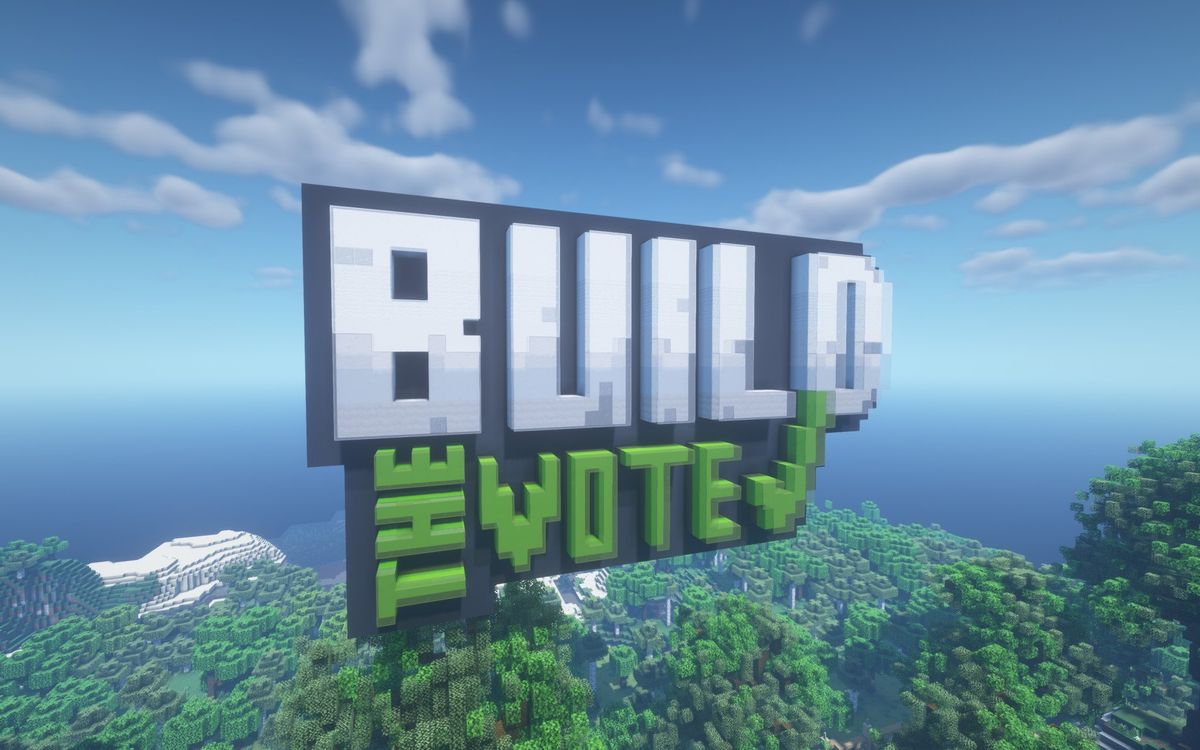
If you happen to live in the U.S., then the discussion of politics has been practically unavoidable over the last few months due to the 2020 presidential election. A few weeks ago, we reported on Minecraft's Build the Vote initiative, which had a singular focus built on an unlikely platform: educate and inform young and future voters about the voting process, and why their vote matters, through the game itself.
I was fortunate enough to have a chance to talk to David Allard, associate creative director at Sid Lee, the creative firm that spearheaded Build the Vote, and Teja Foster, social media director at Rock the Vote, the nonpartisan, non-profit organization founded to inform and encourage voters in the U.S. In today's Minecraft Showcase, I learned about how Build the Vote became a reality, what participants in Build the Vote accomplished, and what the future for this important movement looks like.
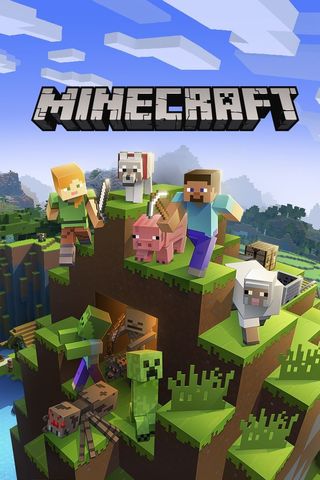
Available everywhere you play.
Minecraft is an inarguable and complete success. It has sold copies in the hundreds of millions, has a huge following of dedicated players, and lets you unlock your every creative desire. It's also available on every platform imaginable, including Xbox One, Windows 10, Playstation 4, and Nintendo Switch. Play with anyone, and play anywhere.
Making Build the Vote a reality
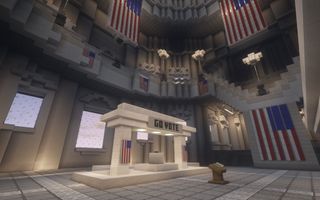
Zachary Boddy, Windows Central: Can you tell me a little bit about the Build the Vote initiative? In your own words, how did the project come to be? What were you guys setting out to do when you started Build the Vote?
David Allard, Associate Creative Director, Sid Lee: So every year, Sid Lee is trying to do something to use for the greater good. This year, we had many offices in the U.S. and one of the main things was about helping the voter turnout, or how can we address civic education with the voting issue. So we had many, many ideas, but one of them was, "what if we tackle the education, instead of asking for everybody to vote for voter turnout?" Can we find a way to solve it during the next four years so we don't have to do it again every four years, but it's something we build on every year?
So from that, we looked for a partner in the U.S., and right away the best partner was Rock the Vote because, foremost, they are the main organization to help educate not only voter turnout but also they're really strong on education. So right away we contacted them and from there, we start to work on the idea of Build the Vote. And there was a reason for that. We looked for a way to reach younger people under 18... and you know Minecraft so you know about the demographic of Minecraft. It truly fit with what we were looking for. So from that, we started building it.
Rock the Vote is an organization focused in America, but I imagine that the idea of Build the Vote was that everyone, anywhere, in a country where their voice matters and their vote matters, that's what Build the Vote was about.
Allard: So yes, we aimed for America because this year, I think the whole world was looking at America. That was a perfect playground for that and again, we had the perfect partner to work on that idea. So yes, that's a matter that exists around the world but if we can make it in America we can make it everywhere...so why not?
Get the Windows Central Newsletter
All the latest news, reviews, and guides for Windows and Xbox diehards.
One of the biggest draws of Build the Vote is that it is built in Minecraft. Like you said, Minecraft has a known demographic. It's one of the largest and most played games in the world. But how did you come to decide that Minecraft was the medium to use for the project, and what was it like organizing Build the Vote through Minecraft? How did you go about building the world?
Allard: Minecraft was the perfect one because it's built in the brand DNA to be about education, not only about the playful side of the game but also they're really strong on the education side of the game — also, with Minecraft education, with all the licensing they're doing right now with the schools.
From there, we looked at all the rules of engagement and how we can build the world. Also, something we worked with Rock the Vote [on ways] to build a world that's nonpartisan. We can do education, and it's an open world where everybody will be able to get in, but also, we will be able to get the numbers out of it, the data, to make sure that we learn from that. So we get to build on that for the next four years.
Participating in Build the Vote
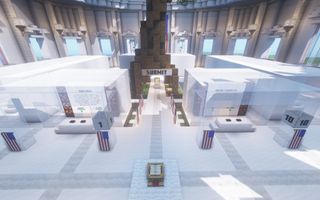
Part of Build the Vote wasn't just the education but was also allowing participants to actually do a mock vote on certain key political conversations and topics. Are you able to tell me what kind of voter turnout you saw with Build the Vote?
Allard: There were a lot of future voters... I think we had 85% conversion. People that were visiting the world, they were doing the whole process from the beginning to the end. So that's good news, too, when we think about building a tool because that means it's efficient.
We had people from around the world, but we didn't have a lot. The main part of the voters was coming from the U.S., and also they were younger people. Because when they're over 18, they're invited to visit Rock the Vote for voter turnout.
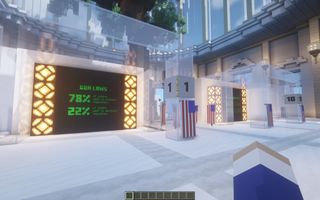
[The results of the votes were shared with me], and they're very impressive. Most of the votes ended in clear, decisive victories with massive leads. Before Build the Vote actually started, did you guys have any expectations for how the vote would go?
Teja Foster, Social Media Director at Rock the Vote: So with Rock the Vote, you know, we are nonpartisan. So we really rely on issues. So we handpicked these ten issues just based on, you know, what Americans believe, what we have seen in our past, and even the turnout from 2018, that started with the kids from March For Our Lives, what young people are really interested in and how they're pulling away from necessarily political parties. And they're interested in what candidates are offering on issues that they believe in. So we weren't necessarily surprised by these factors.
It was really good to see it on paper, and see it come to life.
Because we do know that young people generally want to see improvement in our country. Even you know, with activists as young as, you know, 10-11, seeing with Little Miss Flint, who was also involved with this project. But the results definitely gave us a more inside look at the demographic that isn't able to vote. And we see a lot of polls that are people that are kids that are 18 to 21.
So this gave us a preview of really what the generations to come, that are going to be voting in the next four to eight years, about what they're interested in, and it greatly aligned with what we were thinking. But it was really good to see it actually on paper and see it come to life.
The results
Here are the 10 topics that were chosen for Build the Vote, and the final results for each vote.
| Category | Percentage for | Percentage against |
|---|---|---|
| Combating Corruption | 86% of voters want to reform the financial system | 14% of voters don't want to reform the financial system |
| Criminal Justice Reform | 84% of voters want to reform it | 16% of voters don't want to reform it |
| Education System | 80% of voters want to reform it | 20% of voters don't want to reform it |
| Student Loans | 80% of voters want to forgive debt | 20% of voters don't want to forgive the debt |
| Racial Equality | 88% of voters want to enact a bill to examine modern-day discrimination | 12% of voters don't want to enact a bill to examine modern-day discrimination |
| Immigration | 78% of voters say it benefits the U.S. | 22% of voters say it doesn't benefit the U.S. |
| Global Warming | 90% of voters want to do more | 10% of voters want to stay the same |
| Healthcare Access | 87% of voters want to reform it | 13% of voters don't want to reform it |
| Gun Laws | 78% of voters want to increase regulation | 22% of voters want to decrease regulation |
| Job Stability | 80% of voters want to stabilize work hours | 20% of voters don't want to change the current system |
So how much did you tell each voter that participated in Build the Vote about each thing that they were voting about?
Teja: So we just gave them a little blurb on what voting "yes" means and voting "no" means, kind of how propositions are here in California. Let's say, criminal justice reform. Your vote, yes, would improve — not improve, but decarcerate — a lot of people that are experiencing mass incarceration in the nation. Voting no would mean you would like the criminal justice system to stay as it is, and that you feel that it works... Because I think that's one of the big barriers when you're voting in California, or on props in other states, is that sometimes they get a little confusing, and you don't necessarily know what your vote means when you vote yes or no.
Taking Build the Vote into the future
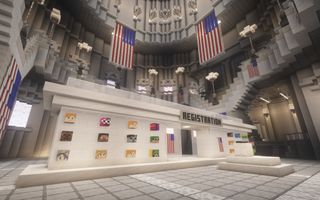
So now that you guys have done Build the Vote, do you think this kind of event will happen again in the future? Are there any plans to expand or improve Build the Vote in future iterations?
Foster: Absolutely. Rock the Vote is extremely excited about Build the Vote. We actually have a program called Democracy Class where we usually, in normal times, go into high school classrooms and educate students on voting, and the process... But now with Build the Vote, we can not only get to students that are younger than just in high school, we can really give them a virtual world for them to be interested in it.
Instead of kind of talking at them, lecturing, it's more of an interactive way for us to connect with young people, especially since everything has gone digital. And we don't really know when regular classes will resume in person.
This is definitely the best way to continue to educate young people on voting because as we see right now, there are already run-offs happening. We're also pushing the importance of voting all the way down the ballot and voting in your general elections as well.
Especially with younger and future voters, Minecraft: Education Edition is actually a pretty powerful tool used by a lot of schools across the country. So, knowing that Minecraft: Education Edition exists, is there a plan to incorporate Rock the Vote or Build the Vote into an official Education Edition lesson plan of sorts?
Allard: During the campaign, we had interest from Minecraft. They tweeted back at Rock the Vote, saying that the initiative was great, and [asked] how they could help. So this is kind of an ongoing process we're doing right now once the election is over. That's the next thing for sure if we can have a partner like Minecraft: Education (Edition) to help us to get it to reach a wider audience with Rock the Vote. That would be the perfect plan, and we're still working on that.
This interview has been edited and condensed for clarity.
Build the Vote was a successful way to teach kids the importance of voting
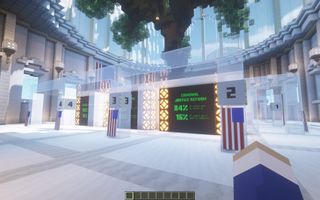
Build the Vote uses Minecraft to reach children who aren't old enough to vote yet, and strives to educate them on how they can vote when they're of age. It makes sense, since Minecraft is one of the best games for kids. Unfortunately, it's historically been the youngest group of voters that have participated the least, and Build the Vote aims to change that with future generations. While this year Build the Vote has already ended, I hope that it returns with greater strength and in more forms over time, as Rock the Vote and Sid Lee find new ways to reach young and future voters.

Available everywhere you play.
Minecraft is an inarguable and complete success. It has sold copies in the hundreds of millions, has a huge following of dedicated players, and lets you unlock your every creative desire. It's also available on every platform imaginable, including Xbox One, Windows 10, Playstation 4, and Nintendo Switch. Play with anyone, and play anywhere.
Minecraft
Main

Zachary Boddy (They / Them) is a Staff Writer for Windows Central, primarily focused on covering the latest news in tech and gaming, the best Xbox and PC games, and the most interesting Windows and Xbox hardware. They have been gaming and writing for most of their life starting with the original Xbox, and started out as a freelancer for Windows Central and its sister sites in 2019. Now a full-fledged Staff Writer, Zachary has expanded from only writing about all things Minecraft to covering practically everything on which Windows Central is an expert, especially when it comes to Microsoft. You can find Zachary on Twitter @BoddyZachary.